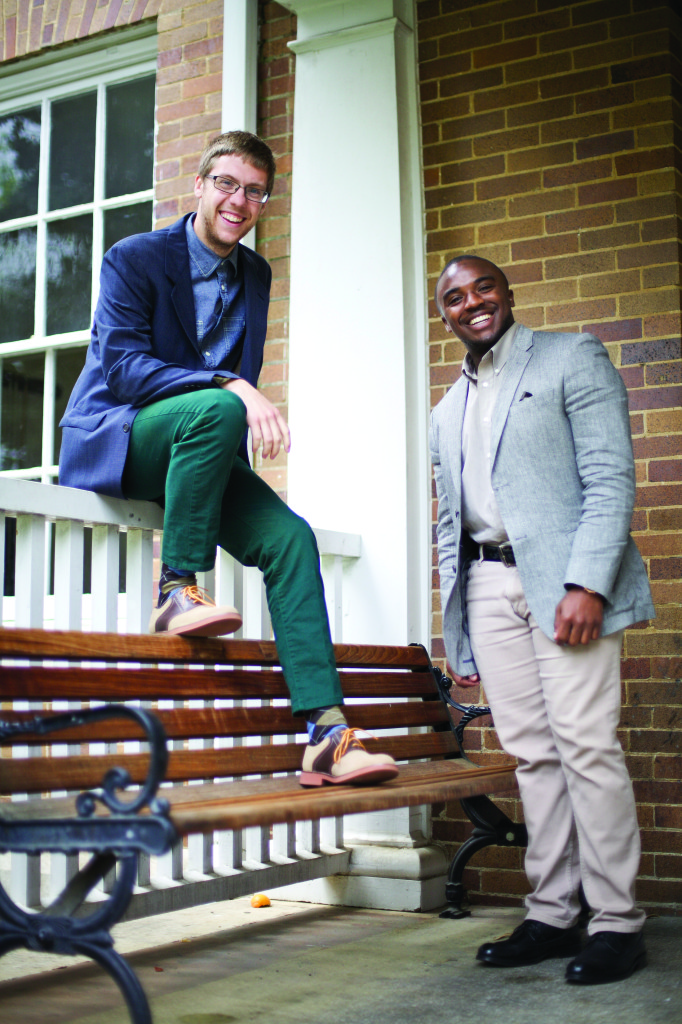From sweats to slacks: Building a professional wardrobe
The liberal arts education that we receive at Maryville College helps to develop many skills that make us hirable after graduation. We know how to give presentations, connect academic studies on an interdisciplinary level and, of course, we know how to write. But keeping your head in the books won’t necessarily help in one area: Dressing professionally.
In the alternate reality of our college years, there are numerous things that we can get away with that just won’t cut it for most careers. While this is more of a weekend tradition than a daily occurrence, showing up to Pearson’s in pajamas is a normal and accepted behavior. Comfort usually reigns supreme when it comes to determining outfits.
However, students have four years to become comfortable with the idea of looking pulled together. Not only out of self-respect, but because many jobs will require it. There are the lucky exceptions to this rule such as field researchers or freelancers who work from home. However, in general, post-graduates will be expected to look professional.
Making the transition to a more tucked-in and buttoned-up wardrobe can seem daunting. Who wants to sacrifice their personal style for the sake of a corporate dress code? Don’t pull out those pleat-front khaki trousers just yet (or ever). There are several graduating seniors who know a thing or two about being pulled together for the sake of professionalism.
Two of our very own “Stylish Scots,” Brian Bush and Patrick Dalton, both said that they remember their style transitioning during college and what it was like coming to college with a wardrobe from high school. Their style didn’t mean as much until they realized what a fun creative outlet it could be.
“At the beginning of my freshman and sophomore year I took myself seriously but I didn’t take my clothing seriously,” Dalton said.
As he went through school, he said that he realized that he was able to duplicate outfits he saw for himself to make himself more stylish.
“Fashion is really another way of expressing myself,” Bush said. “I always thought of myself as a creative person and I was never able to express that through fashion. But once I realized that I could do that, I saw fashion as another extension of creativity.”
While the main goal of dressing up might not be professionalism, both Dalton and Bush noticed what a difference it made in their attitudes. After transitioning into a more put together look, others started to take notice as well.
Dalton, who works at First United Methodist church singing for their choir, said that most of the compliments he receives are from the other members of the choir.
“They’ve seen me grow up,” Dalton said, Over the last semester the other members have seen me and remarked on how hard I’ve been working and how nice I look.”
Bush said that he believes faculty take notice of how student dress.
“It’s one way to distinguish yourself.” Bush said.
Other than impressing post-graduates and professionals, dressing up more often can certainly help a positive self-image. Dressing well goes beyond the adage of “Dress for the job you want, not the job you have.” Although that is certainly a helpful mentality when approaching the subject of employment, a burst of confidence because of a great outfit is a great way to kick start the day.
“It’s always that first compliment,” Bush said. “When you hear in the morning ‘you look nice,’ you know that’s the start of a good day.”
Although both Bush and Dalton are known for their style on campus, they both admit to having more casual days, as well. However, they agreed on one factor: having a great outfit makes even the worst days a little bit better.
“Some days are rough. Some days aren’t. You gotta take the good and the bad, but if I can dress well that makes it that much more bearable,” Dalton said.
These two young men are great examples of how to slowly transition into a stylish, professional personal look over time. Because of the nature of college, it is often difficult to immediately improve all areas of your wardrobe at once. Their advice is to try to find one item at a time to build your wardrobe. Trying to recreate looks from inspirational sources, such as Lookbook.nu, is a great way to think creatively about the items you already have.
The transition from collegiate style to a more polished look doesn’t have to be a scary one. When fashion is seen as a form of personal expression, even a professional wardrobe seems less daunting. There are little things that students can start to do even as freshman to build a solid foundation for their sartorial future. Building a wardrobe one item at a time helps when it’s time to sit down for interviews.
As graduation rolls around, it’s easy to see how fast time flies during the college years. Instead of procrastinating on turning a wardrobe from sweats to slacks, a little bit of effort every year will help give an advantage in the wardrobe department when it is time to leave Maryville College.


